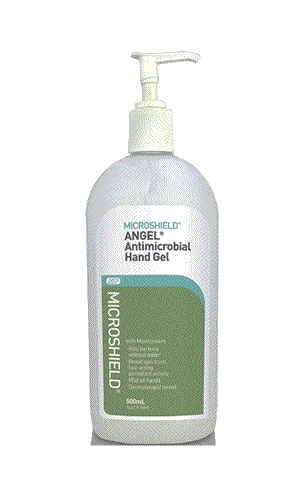Wash your hands with antibacterial soaps or just simple soaps?
Surely that is pretty obvious.
Modern society is obsessed with cleanliness and working in sterile environments. But can being overzealous with cleanliness be dangerous to our health?
More and more soaps now contain antibacterial chemicals such as triclosan and triclocarban.
Hospitals have been using antibacterial chemicals in soaps and cleaning liquids for the last 30 - 40 years, however, the use of antibacterials in domestic cleaners has taken off in the last 10 years. It seams as though consumers have flocked to using these chemicals hoping to sanitize their homes and bodies. It is still unclear, however, on whether they actually work any better at killing or even stopping the spread of germs than normal soap and water that simply wash away germs before they can multiply to a dangerous level.

View the video on the right. Dr. Christina Burch from the University of North Carolina Chapel Hill, comments on antibiotics in hand soap.
She is talking about an antibiotic resistant bacteria called Staphylococcus aureus (MRSA), that is now responsible for more deaths than ever before in the US due to the fact that it is not only resistant to the antibiotic methicillin but to a range of antibiotics.
Firstly read the article on evolution of super bugs. This is important in gaining the right background knowledge.
1) Dr. Burch suggests that Staphylococcus aureus is not a pathogen. What is a pathogen?
2) Where does Staphylococcus aureus usually live?
3) How is this bacteria beneficial to Humans?
4) When does Staphylococcus aureus become a problem?
5) How does Dr. Burch suggest antibiotics assist in the evolution of super bugs?
6) How effective are antibiotics in hand soaps?
Present an argument against the use of antibiotics in domestic hand soaps.
Don't forget to research widely and include a bibliography.
The presentation is in two parts and can be in project form or in other methods that exploit the use of multimedia, such as PPT.
In part 1 of your presentation the target readers will be people form the scientific community and as such use the appropriate terminology. Discuss:
-
the ways in which a bacteria deals with antibiotics,
-
the development of resistance from an evolutionary point of view mentioning the selective pressure of antibiotics,
- how bacteria can transfer genes
from one bacterium to another,
- talk about how antibiotics work to kill a bacterium and why adding antibiotics to hand soaps is counter productive.
- where else in our environment are antibiotics used and likely to be encountered by Humans,
- the danger of frequent and overexposure to antibiotics in the our environment,
- the fact the we have commensal bacteria living on our skin which are important to maintaining our health and describe how these commensal bacteria work to maintain our health.
In part 2 of your presentation communicate to the layperson the dangers or inappropriate use of antibiotics.
This can be in one big image, cartoon form or a wall chart. Discuss with your teacher alternatives.
In part 2 of your presentation
convince the reader of:
- the dangers of super bugs,
- a future without effective antibiotics,
- our preoccupation with super cleanliness and its dangers.
Charles Rock, a researcher at St. Jude Children’s Research Hospital in Memphis, Tenn., also published work in Nature saying “The use of triclosan in these products will lead to the emergence of resistance. There is no strong rationale for its use.”
Soon after Rock’s article, the Soap and Detergent Association and the Cosmetic, Toiletry and Fragrance Association released a statement disputing his findings. It blamed the resistance problem on doctors’ over-prescribing of antibiotics.
“Antibacterial products do not cause bacterial resistance,” Ed Kavanaugh, president of the cosmetics group, said in the statement. “They kill germs, thus breaking the circle of infection.”
Argue, from an evolutionary point of view, that by killing the vulnerable bacteria we are in essence encouraging the evolution of resistant strains.